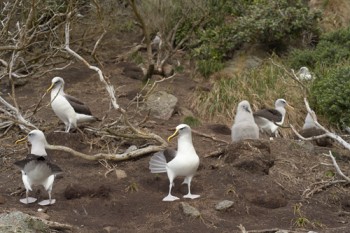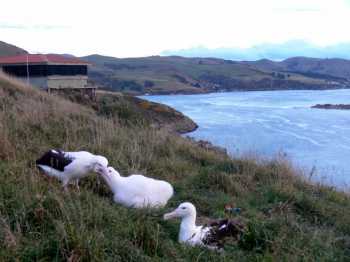Luke Einoder (School of Earth and Environmental Sciences, Adelaide University, Australia) and colleagues have written in the ornithological journal, The Condor on feeding strategies of the Short-Tailed Shearwater Puffinus tenuirostris.
The paper’s abstract follows:
“To understand how animals cope with environmental variability it is necessary to identify the degree of flexibility in a species' diet and foraging mode and the consequences of this flexibility for reproduction. We examined rates of feeding and energy delivery to chicks by a long-lived pelagic seabird, the Short-tailed Shearwater (Puffinus tenuirostris). Individual adults alternated between foraging trips of short and long duration in a dual foraging strategy, but the allocation of time on those trips varied significantly from year to year. In two years when sea-surface temperatures of feeding grounds exploited during short trips were cooler (2005, 2006) adults initially fed their chick more often, then feeding decreased through the chick-rearing period. In the following year of warmer sea-surface temperature (2007), the number of feedings per day was initially low but increased through chick rearing. Despite varied feeding patterns, breeding success was consistently high, yet in 2006 the chicks' poor condition indicates the capacity for buffering chicks from these effects was lower than in other years. The relative contribution of short and long trips to the amount of energy delivered to chicks also varied by year. During local food shortages, shearwaters appeared to deliver more oil from long trips and increased the frequency of short trips. Yet in 2006, low-calorie prey from short trips coincided with low volume of stomach oil from long trips, resulting in chicks' poorer condition. Oil volume and increased short-trip foraging provide potential mechanisms of flexibility enabling adults to buffer prey delivery to chicks during food shortages.”

Short-tailed Shearwater, photographed by Mark Carey
Reference:
Einoder, L.D., Page, B. & Goldsworthy, S.D. 2013. Feeding strategies of the Short-Tailed Shearwater vary by year and sea-surface temperature but go not affect breeding success. The Condor 115: 777-787.
John Cooper, ACAP Information Officer, 16 January 2014

 English
English  Français
Français  Español
Español 


